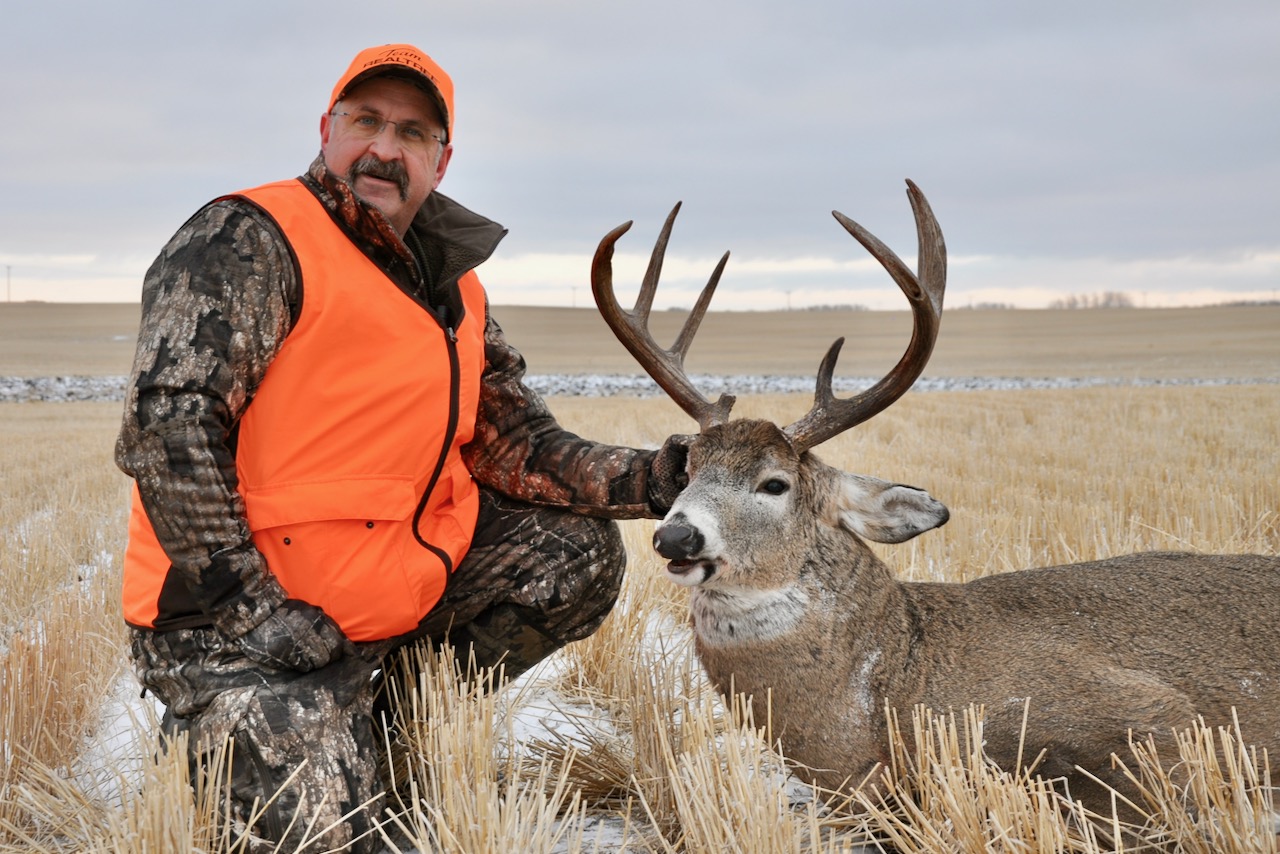HOME ON THE RANGE
For a unique and challenging hunt, set your sights on the giant whitetails of the Prairies
Advertisement

I was walking along a creek bottom and making frequent stops to scan ahead when I spotted something sticking out of the tall, rhythmically swaying prairie grass. It was a few hundred metres out, so I lifted my binoculars for a closer look. Sure enough, it was the antler tips of a bedded buck, five tines on the right side. He was unaware of my presence, so all I had to do was slowly stalk ahead to within 225 metres, then wait for him to stand.
Of course, that wasn’t as easy as it sounded, given the possibility of another deer, a rabbit or a partridge spooking before I could get within shooting range. But the stalk went perfectly, and once I was close enough, I sat down, set up my shooting sticks and waited for the buck to stand. It wasn’t long before I was cutting my tag on another prairie whitetail.
Advertisement
When hunters think of big game on the southern prairies of Alberta, Saskatchewan and Manitoba, they tend to only think of antelope on the sage flats or mule deer in pastureland. They’re often surprised to learn that not only do whitetails inhabit the prairies, they also thrive there. What many consider to be a flat landscape actually includes creek bottoms, cattail sloughs, fencelines, weed patches, old farmyards, hedgerows and a scattering of small bluffs of trees. That’s more than enough cover to hide plenty of whitetails.
Still, these prairie deer are rarely seen. Most of the year, they stick close to their bedding areas when the sun’s up, but as the rut approaches, they become more active during the daylight hours. Hunting these cagey bucks, which seem able to hide in the middle of nowhere, makes for a unique and fun challenge. Here are some of my top tips for spotting, stalking and still-hunting big whitetails on the prairies.
